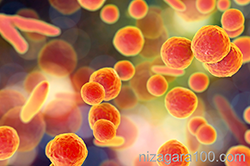Mycoplasma Infections In Male Patients: All You Need To Know
Studied in a symptomatological key, numerous genital infections are marked by very similar symptoms that are easily confused: for this reason, the recognition of the pathogen involved in the condition is not always so immediate. In addition to the generality of the prodromes, sometimes there is also an added difficulty to identify with certainty the precise genital anatomical site that is painful, making the diagnosis clearly more complex. What continues to be repeated in textbooks and scientific articles is the need to seek medical attention from the earliest symptoms, without hesitating or stalling: in fact, a medical examination with a differential diagnosis is the only effective method to ascertain infection and to establish its severity.

The patient’s medical history, therefore the anamnesis, gives a general idea on the subject’s health status, on possible alterations of the endocrine balance, on the effectiveness of the autoimmune system and on all previous pathologies. Today we will speak about Mycoplasma hominis and its symptoms, treatments and the outlook.
Mycoplasma hominis is a microorganism that populates the genitourinary tract of some men and women, especially those who are sexually active.
Its presence in these places can have both commensal (it does not create any suffering or disturbance) and pathological meaning. In the male patient it can determine infertility, urethritis, prostatitis and pyelonephritis. Since this organism is often isolated together with high infectious agents, its degree of pathogenicity is however uncertain. Favored by poor immune defenses, Mycoplasma hominis can also be the cause of various forms of morbidity in extragenital sites.
In men, it causes a discreet serous or yellowish discharge. Mycoplasma genitalium infection is usually limited to the urethra and genital tract, and very rarely causes urinary tract infection.
Diagnosed by urethral sampling in men, this infection must be treated in both sexual partners.

The percentages of colonization, both in the male and in the female sex, are correlated to the sexual activity (different partners), but the transmission of the infection can also occur vertically from the mother to the child. The data present in the literature are conflicting; on average, Mycoplasma hominis occurs in about 20 to 50% of sexually active women and in slightly lower percentages in males.
The treatment used to eradicate Mycoplasma hominis infection uses antibiotics that interfere with protein synthesis, such as azithromycin and doxycycline.
Mycoplasmas are the smallest cells capable of independent living, with a cosmopolitan distribution. They have no rigid cell wall and as such, they are of extremely variable morphology (spherical, filamentous), human mycoplasmas include the genera Mycoplasma and Ureaplasma (mycoplasma capable of hydrolyzing urea). Mycoplasma hominis and Ureaplasma urealyticum are the pathogenic species most frequently isolated from the genitourinary tract.
